Types and varieties of irises
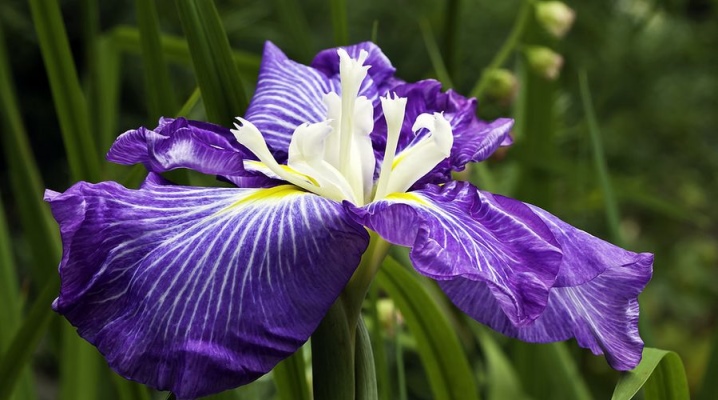
Irises are plants that can decorate any bouquet. They perfectly dilute wildflowers, become a highlight in a bouquet with daisies, perfectly complement tulips and chrysanthemums. In a monobouquet, irises are also elegant and graceful. But there are irises not only of different shades (which many do not know), but also of different types. And often novice gardeners are interested in these flowers, since this plant can be called modest and unpretentious.
Main groups
Iris is a perennial plant that is impressive in its shape and differs from the general mass of flowers in appearance. It can be planted in sunny open areas. Plants are not only externally pleasing; enchanted by their delicate aroma associated with a summer evening. That is why the notes of this plant are easy to see in famous perfume compositions.
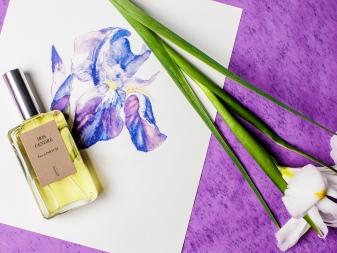

Irises also grow in the wild: in meadows and in the steppe, even on steep cliffs, you can find them. In greenhouse conditions, experts have bred at least 500 different varieties of iris, they are suitable for growing plants in garden plots.
Conventionally, iris varieties are divided into several groups:
- bearded;
- undersized;
- bulbous;
- Siberian;
- Japanese;
- marsh.
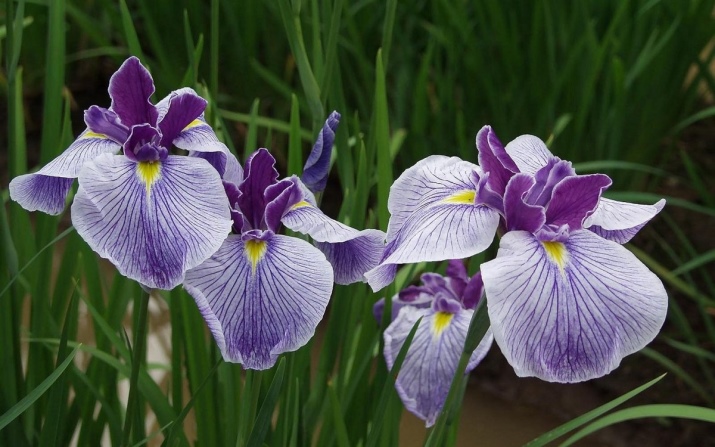
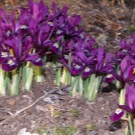

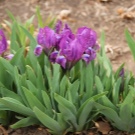
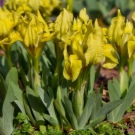

In some other classifications, border, Californian, terry, high and low, re-flowering, gramineous, xiphoid, ayrovidny and other plant species become in this series.
Bearded
This is the most popular type of plant. It is distinguished by its thin hairs on the lower petals.
Bearded irises include the following varieties.
- Cloud Ballet. These flowers can be called delicate and romantic, because they are distinguished by their original wavy edge of the petal and a noble blue color, which lightens to the base. The aroma of this variety is similar to that of an apple sprinkled with fresh caramel.
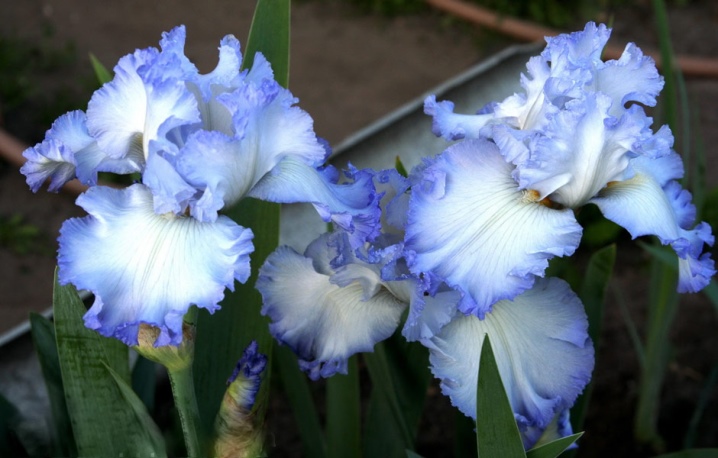
- Arabian story. And this flower will appeal to those who prefer orange and yellow shades. The plant also boasts a delicate aroma and subtle citrus motifs.
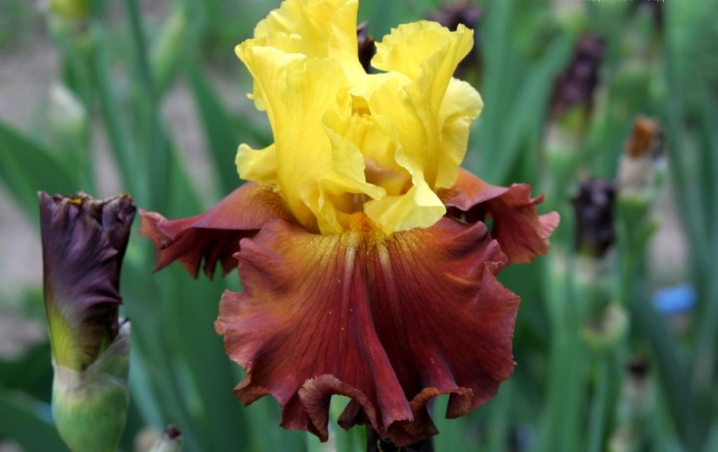
- Depeshe Mode. This variety will appeal not only to fans of the cult group, but also to those who love unexpected color transitions. This is the so-called broken color, it is clearly manifested in the irises of the described variety - a pale yellow background interspersed with a delicately emerging purple pattern, consisting of lines and strokes.
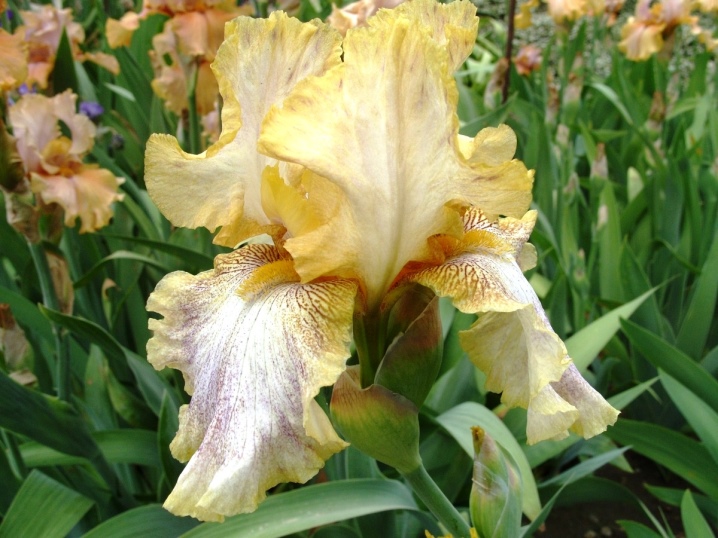
- Back in black. And these are dark purple, rich, deep irises. If you look at the flowers from a distance, they seem to be dark. Looks perfect in ascetic mono bouquets. With such flowers, and in a strict black velvet dress, you can go to the premiere at the theater - the image will be super-elegant and stylish.

- Heritage Lace. Lacy, airy, like a flower created for watercolor will appeal to those who like tenderness and softness, gentleness and light color transitions.
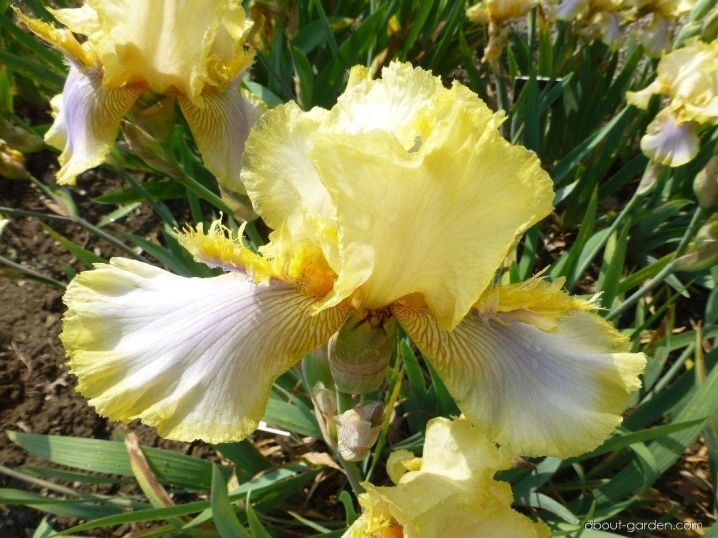
And these are only the most popular varieties. They are picky, even a novice florist can cope with the cultivation of bearded irises. Bearded irises grow up to 80 cm.
Beardless
This type of irises combines Siberian, Japanese, Louisiana, Californian and other types. Some of the most recognizable on this list are Siberian irises. These are very beautiful and showy flowers. Their peculiarity is that the entire period of flowering, the foliage of the plant retains a rich green color.
The sophisticated flowers were appreciated by gardeners who discerned a special elegance in narrow lines, airy leaves, in the very silhouette of the bush.
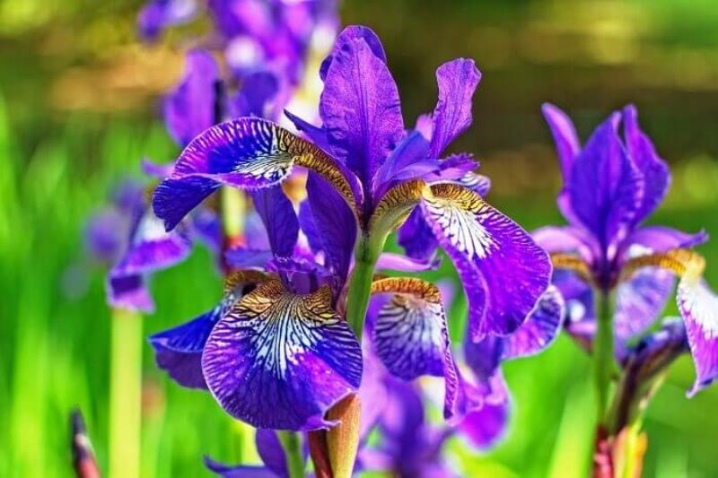
The color palette of these irises is also impressive, and their endurance becomes the final choice. It is easier to care for them in not the most comfortable climate than for other types of iris. The flowers of "Siberians" are smaller, but this is a special charm. And there are more of them on the bush: if it has already reached the age of four, then 4 dozen peduncles may appear on it. Not very large petals, by the way, better tolerate windy and rainy weather, which also becomes an advantage of Siberian irises.
Let's compare them with a Japanese flower. It is a giant of its kind - its leaves can grow up to 60 cm in height. Color - from pale yellow to aristocratic emerald. During the period of active flowering, this plant will become a real hit in the garden. But this species is more whimsical: for example, it is not frost-resistant.
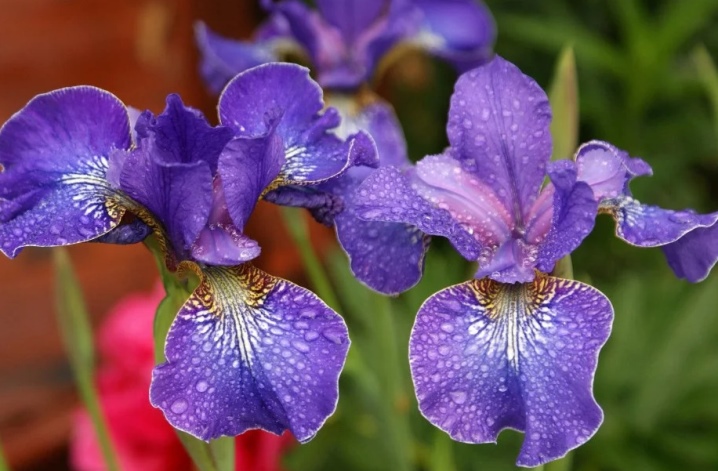
Aryls and Arylbreds
In domestic gardening, this group of irises has not yet entered the top of the most popular plants, but this is understandable - they are much more thermophilic than, for example, bearded irises.
Aryl (A) - these are species irises of the oncocycle group, as well as the regelium group. Arylbredy (AB) - these are hybrids between the Aryls themselves and other bearded irises. Arils and many Arylbreds are distinguished by the fact that after flowering, the plants seem to hibernate, their leaves dry completely, and again the greens will break through only when the heat subsides. Relatively speaking, the flower begins its second life in August.
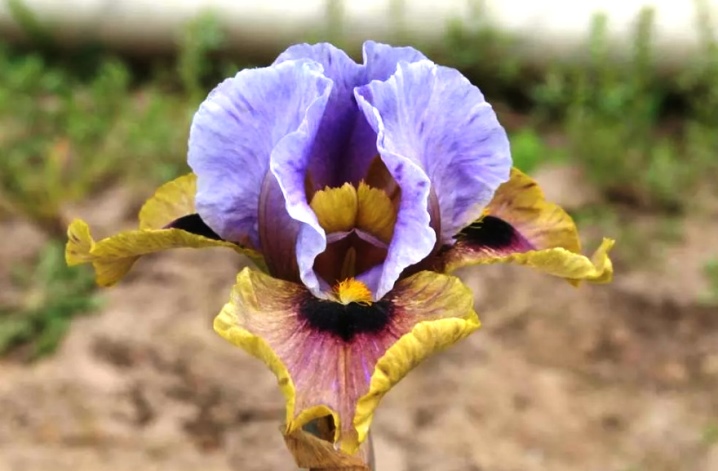
It is still impossible to say that Aryls and Arylbreds are constantly replenished with new varieties. The flower has low fertility, high dependence on heat, so they are not yet competitors to other types of irises.
Hybrids
Due to their gracefulness and fragility, irises are often called "northern orchids". And in order to fix such a characteristic for a flower, breeders are working to improve the plant. The most decorative among all irises are the bearded ones, and they include all varieties of hybrid garden iris. In the world assortment, which includes about 80,000 items, it is the hybrid garden irises that make up the majority.
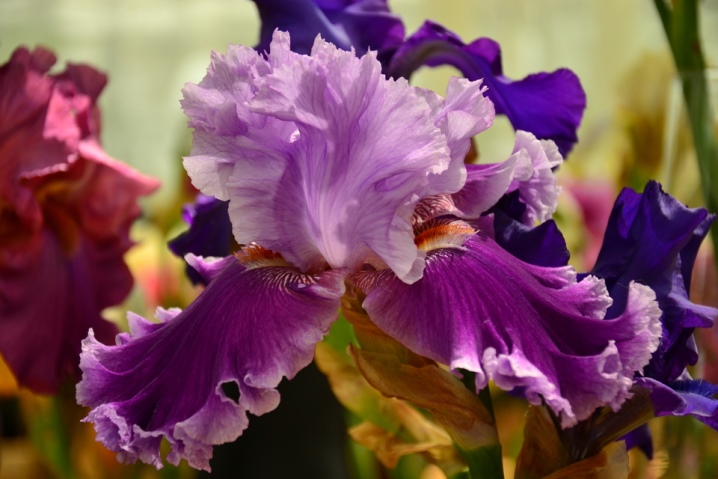
Horned, black, pink, peach, orange ... The list goes on and on. For example, for a long time, breeders of the world have tried to create an unattainable red iris. And once an impressive reward was assigned for the breeding of such a flower. But lycopene - the pigment necessary for such a color, one might say, deprived the iris of its presence. Involved in the creation of red flowers and genetic engineering, but so far there has been no serious success in this. But in the traditional way, the breeder managed to bring out what is today called red irises - a lacy and bright variety. However, the pursuit of the bright red color of the "northern orchid" continues.
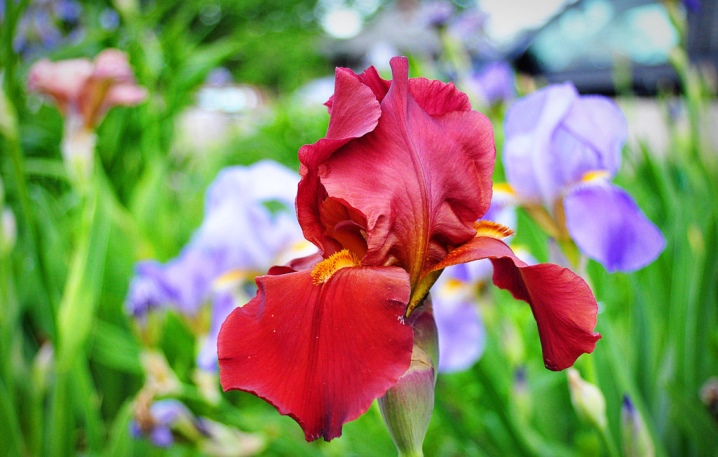
Species
It is worth mentioning here the marsh irises, which are otherwise called pseudo-aira. Their name explains that these flowers prefer moist soil to dry soil. In their natural environment, these plants often have a yellow or pale lemon color. Usually, this type of irises is used as a decor for a reservoir on a site.
Bulbous irises are an interesting choice. They will perfectly decorate a flowerbed with crocuses and galanthuses, they will be an excellent filling of alpine slides.
Due to the fact that experts were able to breed several varieties of these bulbous, gardeners were able to "settle" irises in their plots, which are distinguished by very early flowering.
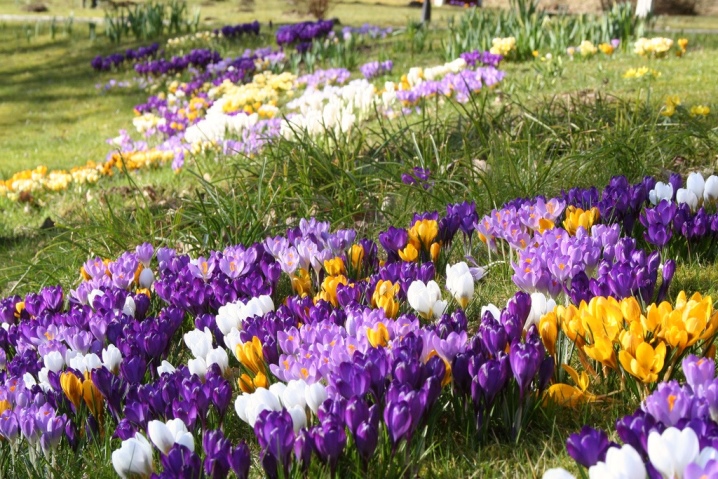
Color options
If you have discovered in yourself the talent of a landscape designer (or if not talent, then the desire for it), an excellent soil for the realization of this role will be the iridarium - an iris garden that can be created on the site. It consists only of these flowers, but if you combine their different types and varieties, you get an incredibly beautiful living picture. And if you remember that the name of the flower is translated as "rainbow", the very idea of the iridarium becomes quite logical.
What this garden can consist of.
- Iris german refers to the bearded species, a very popular flower.The purple and white color is considered the classic version of the iris. And the yellow core in the flower adds the necessary contrast.
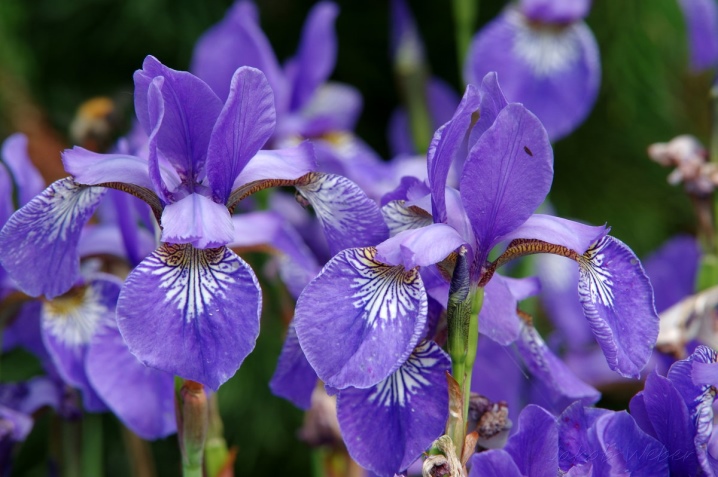
- "Spuria". It is also a combination of purple and yellow, but sharper, brighter. In an open petal, only the edges are purple, in a closed petal, almost the entire base.
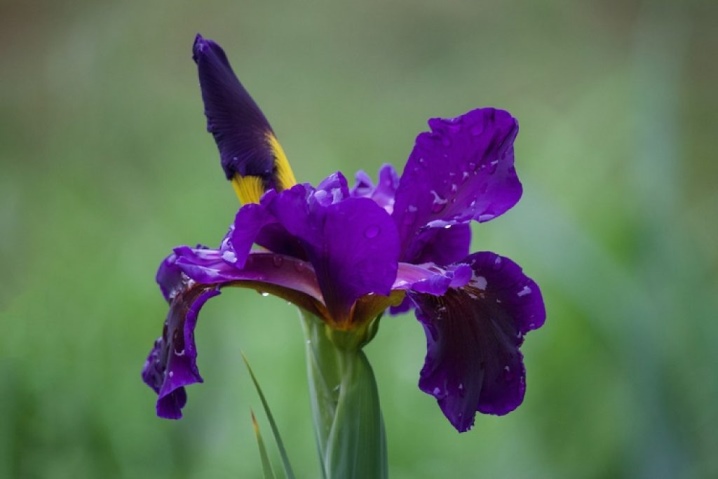
- "Black dragon". The plant's speaking name will appeal to such a flower not only for lovers of Gothic, but also for those who appreciate monochrome in gardening and floriculture.
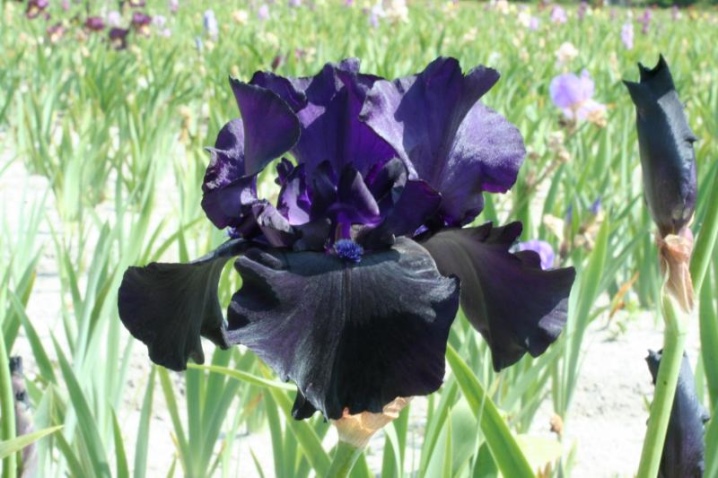
- "Supreme Sultan". A bright combination of yellow and burgundy. The lowered petals are deep burgundy, and the top is yellowish orange. The stem of this variety can grow up to 90 cm.

- Sultan Palace. A variety that is classified as a red iris, although there are hints of burgundy and brown. The petals are slightly corrugated along the edge. The stem grows up to 1 m in height.
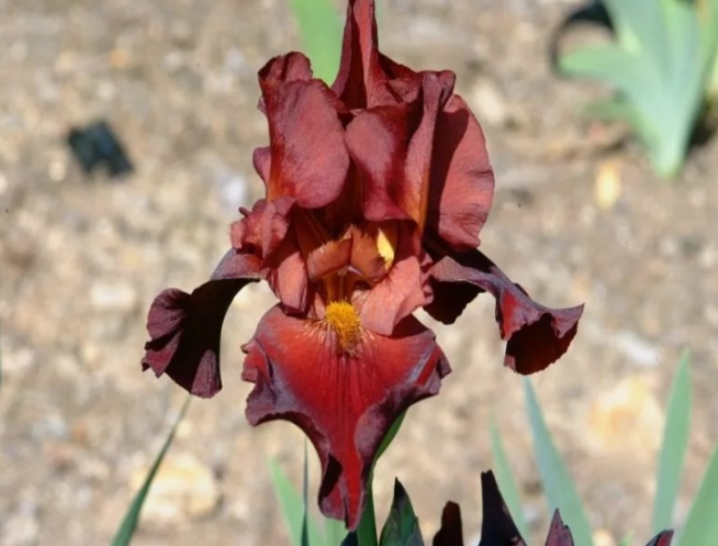
- Blaches. This Germanic iris is a combination of light blue and blue. Undemanding and frost-resistant variety.
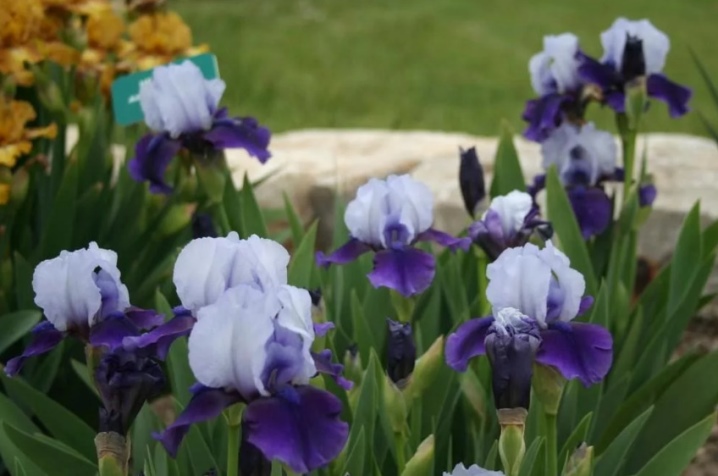
- Pink Castion. Another telling name. The flowers of the plant are faded pink, the petals are slightly double, the beard is deep pink.
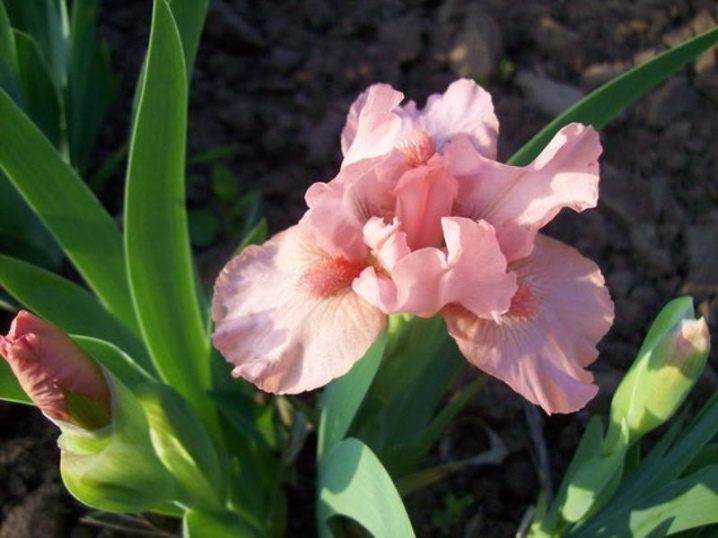
- "The Snow Queen". And here is the most important variety, which indicates the resemblance to an orchid. The petals of the flower are snow-white, the petioles are lemon-colored, the leaves are narrow and elongated in a thin arc.
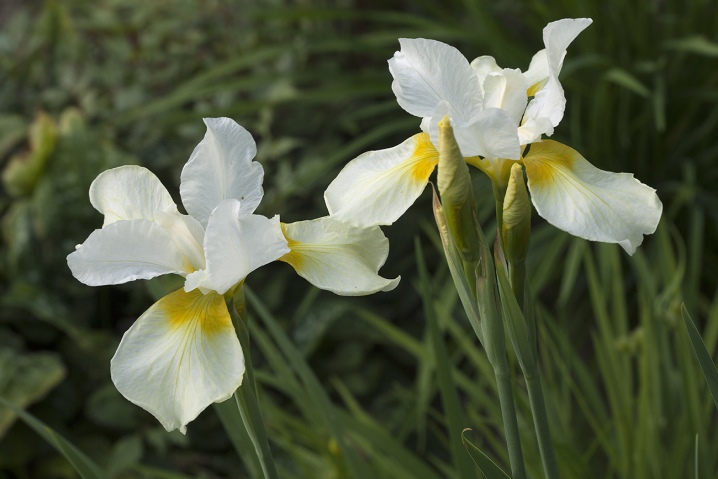
And these are just a few varieties that will create amazing color in your area. But you can arrange a more careful selection by aligning the flowers, if not by height and splendor, then by the unity of the requirements for successful growth and development.
Popular varieties
It is easy to get lost in the names of irises, as there are so many of them. Varietal variety allows you to choose flowers for virtually any site and different climatic conditions.
The top 15 varieties might look like this.
- "Immortality". Sometimes called the royal flower, it belongs to the snow-white irises, re-flowering. The flowers are really white, very large, with a purple drag around the edges. In May and June, it blooms profusely, then the bush will give color at the end of August and until the very frost.
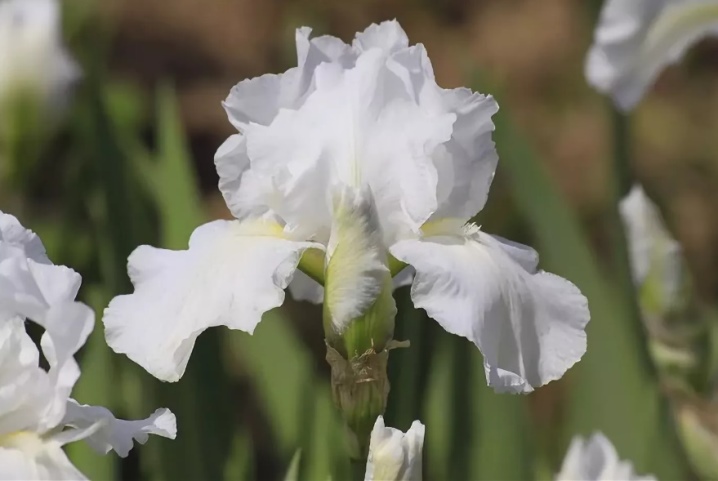
- Ambroisie. A purple-pink plant with a late flowering period. The bush grows up to 85 cm, the flower reaches 17 cm in diameter. This is a large plant with a dense texture, winter-hardy.
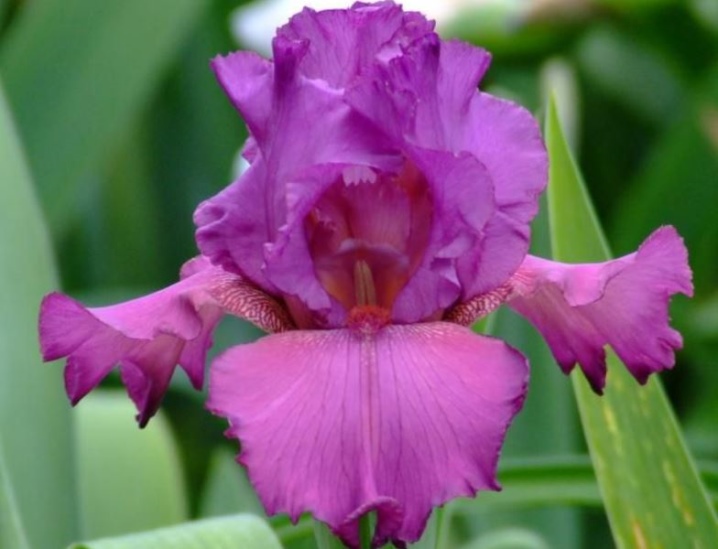
- Sea Power. This is a blue iris with a white-blue beard, the peduncle grows up to almost 1 m. A beautiful flower with expressive corrugation. Looks perfect in bouquets with yellow flowers (chrysanthemums, tulips, asters).
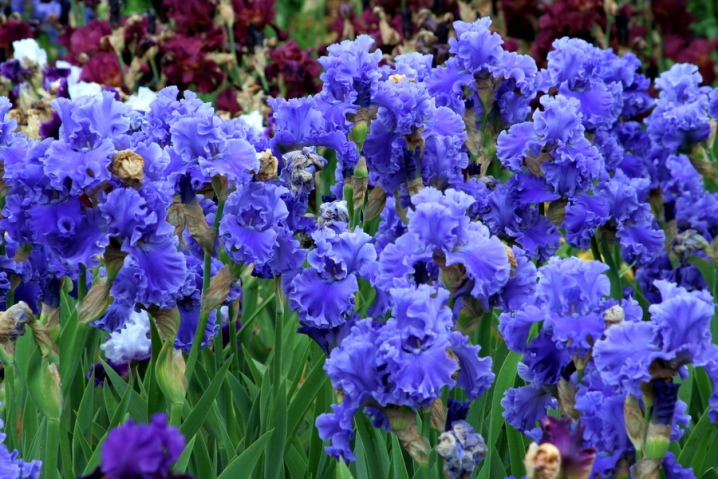
- Ghost Train. A tall plant of the bearded species with a wonderful color - black and purple. Blooms for about 2-3 weeks in May-June. It has super-corrugated petals and a very recognizable sweet scent. The flowers are beautiful, large enough, hold on slender and strong peduncles.
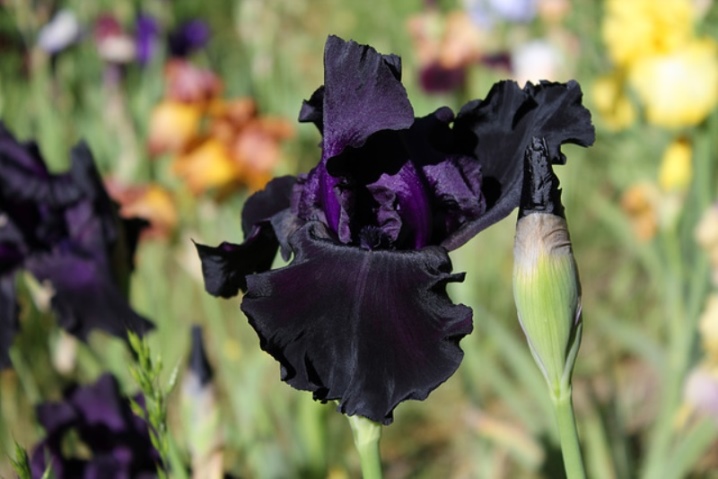
- Daring Deception. It is a purple foul flower with a white standard and an orange beard. It was bred in 2012, it has an average flowering time and a bush height of 89 cm.

- Purple Serenade. A chic purple variety with medium late flowering. It is a huge flower with a flawless shape and good corrugation. Ideal both in mono bouquets and in rich composite compositions.
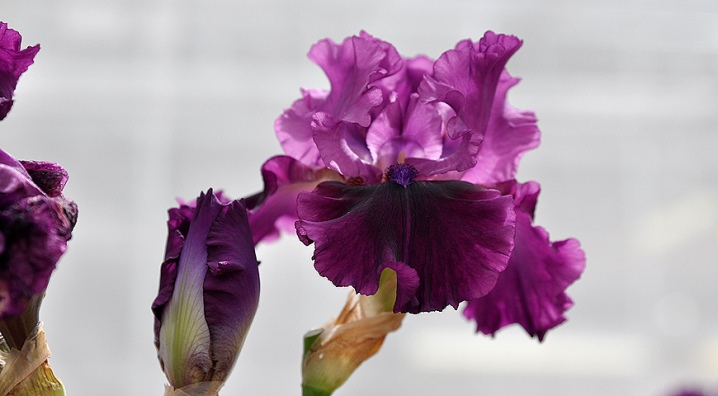
- Autumn Princess. It is a perennial bulbous plant of the color of fallen leaves. Its height is small - up to 60 cm, diameter - up to 8 cm. It blooms in May-June. It has lace petals with a yellow fiery core.
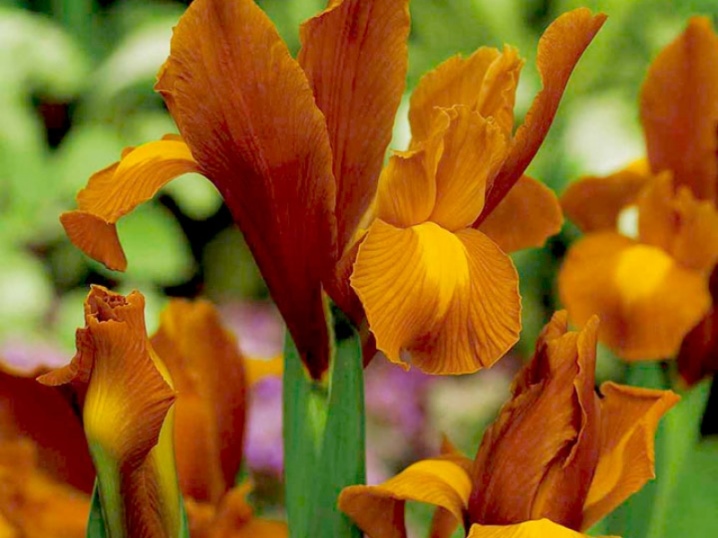
- The Lion King. An excellent variety for rich color bouquets. It has narrow, interestingly shaped petals, which contain yellow, bronze, and brownish notes. The lower petals are distinguished by dense shading. Iris grows up to 75 cm.
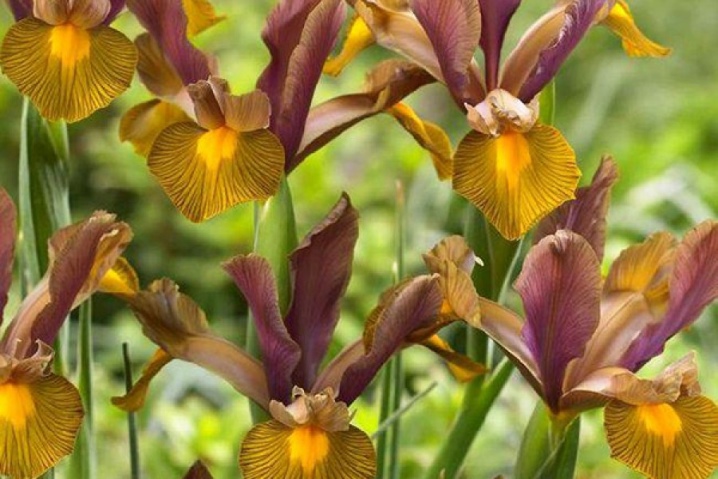
- Berlin Tiger. This variety is also often compared to orchids - externally, the plants are really similar. This is a flower with a memorable brindle color, dense dark shading on a yellow-light green background. Its petals are not wide. This iris will not grow tall.
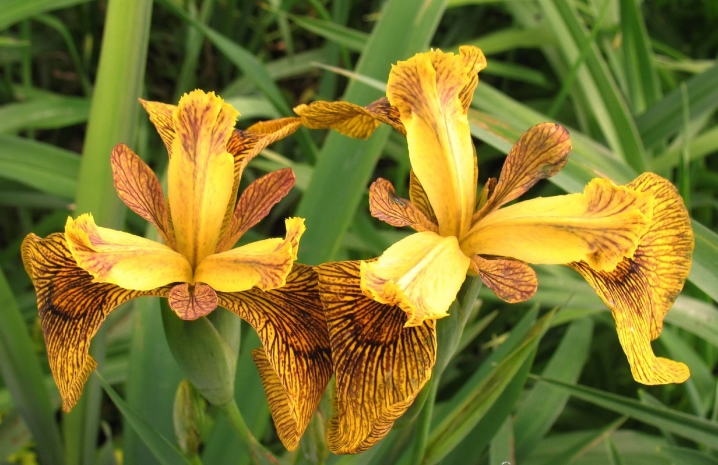
- "Juno". Definitely an original flower.It has a dense stem, the flowers have a special structure, they are painted in white, blue, yellow and orange tones. It is a small iris that does not grow more than 0.5 m.

- Vibrant. Another representative of yellow irises. It has a monochromatic expressive color with bright corrugation of petals along the edges. Tall plant with large flowers, does not degenerate into vegetation.
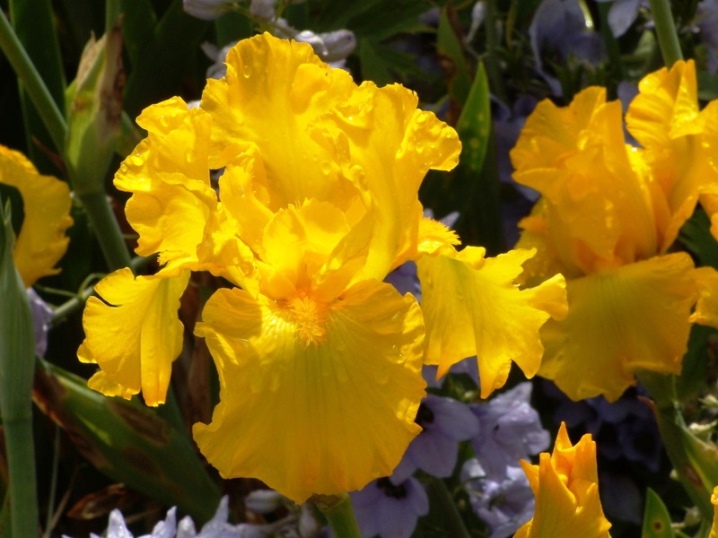
- "Vizier". Beautiful tall flowers, color of petals - from raspberry to pomegranate. The petals are corrugated along the edge; an orange groove is visible on them.
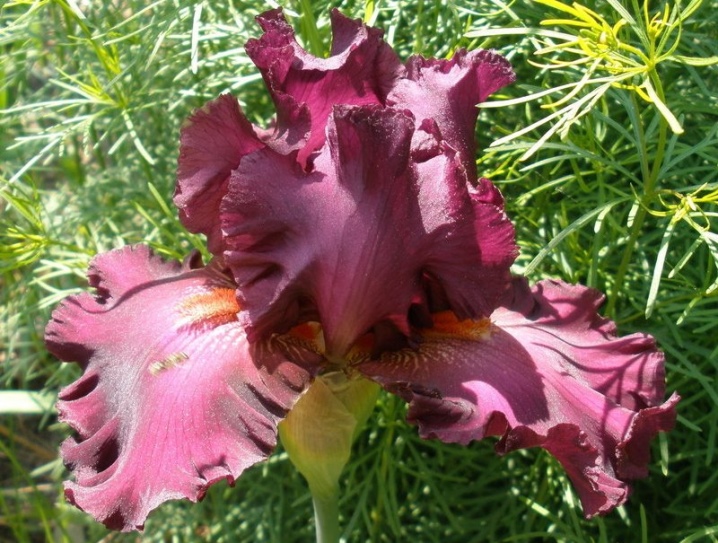
- Champagne Waltz. It is a two-tone hybrid with a peach base color interspersed with apricot veins. The petals are velvety to the touch.

- "Supermodel". Luxurious lavender iris with an orchid-shaped flower. Smells very nice, blooms only in July, is considered winter-hardy.
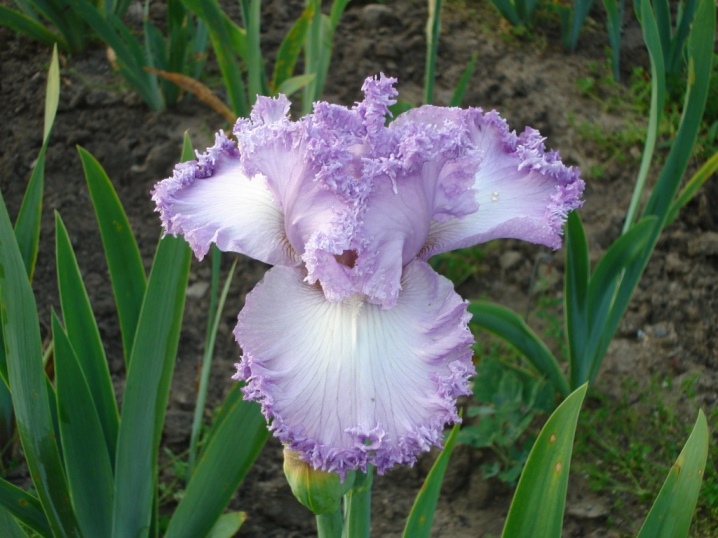
- "Cambridge". The flower of fine beauty belongs to reliable highly decorative varieties. It has azure blue petals and a yellow-light green base. It grows quickly and pleases with abundant flowering.
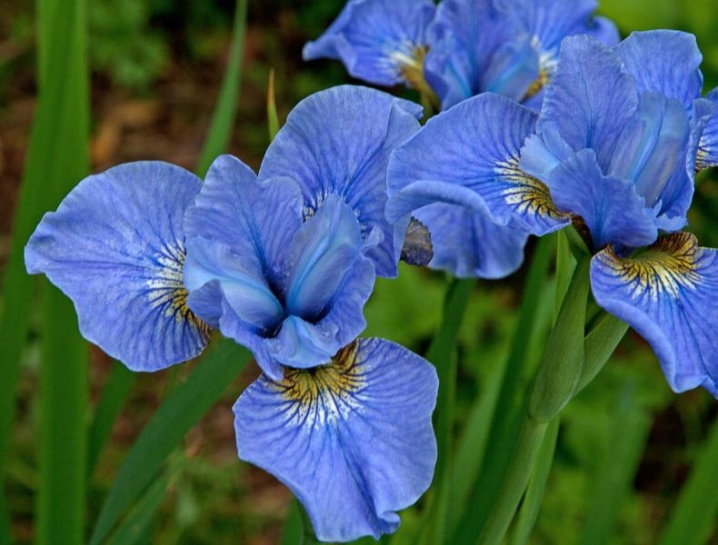
This list contains varieties that have proven themselves from the best side. But the list can be supplemented with at least a dozen more varieties. Therefore, choosing irises is not so easy, it is impossible to abandon one type in favor of another - all are delicious. But the circle narrows if the grower wants to grow unusual varieties of irises.
Unusual varieties
These colors include, for example, chrysographis. This is not the most popular flower, it is being bred in China. These plants cannot boast of dense foliage, their bushes are not the most dense, loose. But the flowers have very graceful narrow petals. The variety called "Black Night" is still inferior to its more popular "brothers", but many growers are already paying attention to such an unusual flower. In what in what, but in extravagance you will not deny him.
"Spuria" is also a rare variety in the flower beds of post-Soviet countries, like "Black Night". In shape, the flowers resemble orchids, the lower petals are noticeably narrower than those of most other varieties of this plant. Each flower lives no more than a week, the plant itself blooms for several weeks.
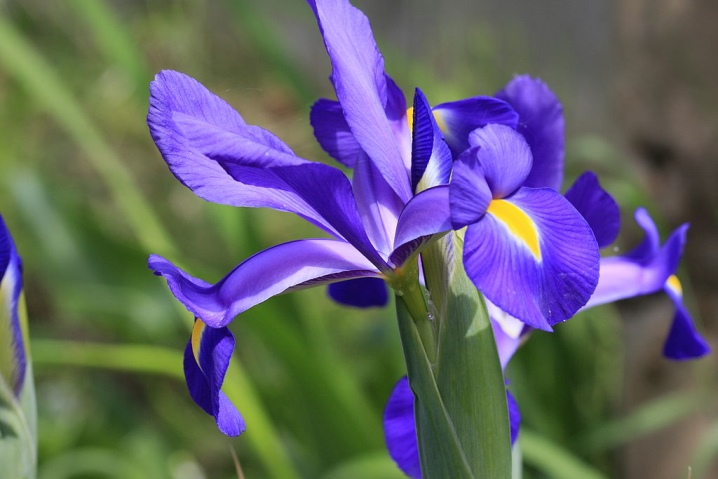
An unusual representative of a large family of irises is the variety "Mother Earth". The petals of these plants are lilac with a pinkish undertone, the lower ones are brighter. Yellow is visible in the center of the petals and on the groove. In a peduncle up to 9 buds. It blooms in the first month of summer, the stem grows to 90 cm.
How to choose?
The people also call the iris "cockerel" or "Iris", but the noble name of iris is more common today.
These flowers are incredibly picturesque: in many art schools, they begin to study botanical illustration with them. And on the site they will look even more beautiful.
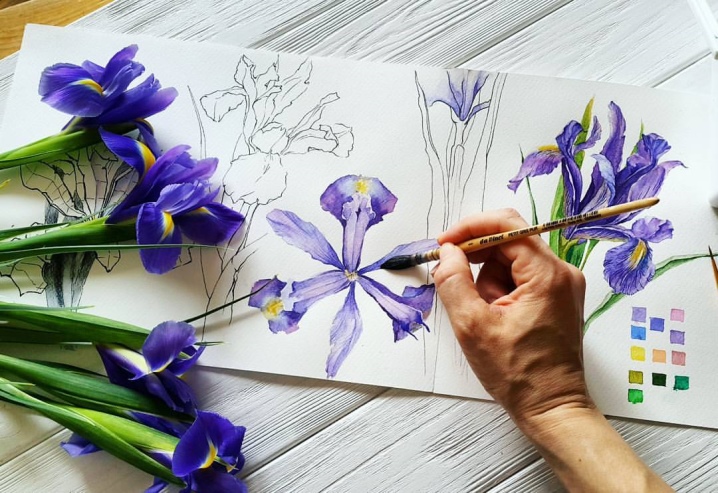
Experts advise those who have not yet experienced the planting of irises, the following.
- Be skeptical about seeds sold in brightly colored sachets. Yes, the names and images of flowers on them force you to buy them (at least, they suggest these thoughts). But the contents of the bags and what the seller depicted on the packaging can, to put it mildly, be different. Almost all varieties that are on sale are brought from Holland. This means that long transportation has already affected the quality of the planting material and its survival rate.
- If you see the inscription "YE" on the packaging, this means that you have a remontant grade in front of you. That is, the iris will bloom not only in June, but also in autumn. But it cannot be said that this is a definite plus, because, for example, in central Russia, autumn flowering is fraught with the fact that the iris simply does not have time to calmly go through the planned dormant period and cannot prepare for winter. There is a risk that the flower will not survive the cold months.
- The main selection criterion is proven varietiesthat are adapted to the current climate. Communicate with other growers, share experiences, listen to their advice.Don't be afraid to ask your iris sellers about the variety and care they need. It is convenient and profitable to apply for planting material to amateur breeders, as well as to those who grow flowers and seeds for sale. You will know that these irises have survived the hardships of transportation and that they will take root in your climate.
And, of course, do not despair if the cultivation of flowers did not give the desired result right away. Irises begin to bloom profusely only in the third year after planting. But this graceful beauty, multicolor, aristocratic look is worth waiting and trying.
For information on what varieties of iris are and how to care for them, see the next video.







































































































What a variety! Indescribable beauty!
The comment was sent successfully.